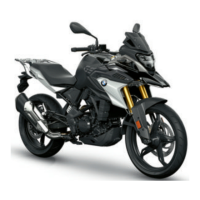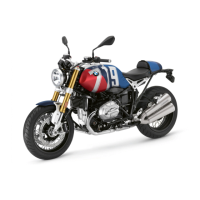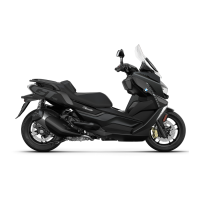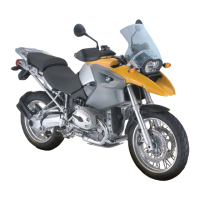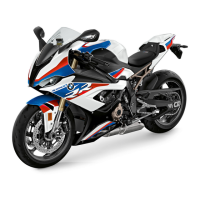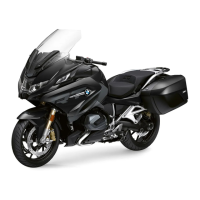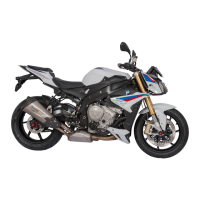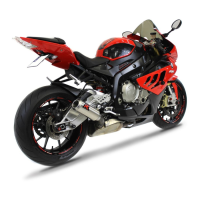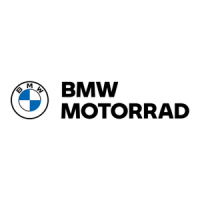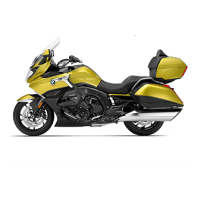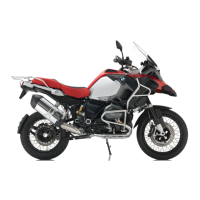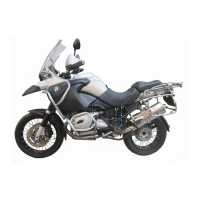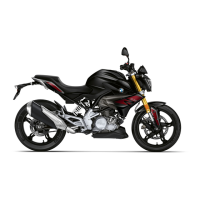
Do you have a question about the BMW Motorrad G 310 R and is the answer not in the manual?
| Displacement | 313 cc |
|---|---|
| Transmission | 6-speed |
| Seat Height | 785 mm |
| Fuel Tank Capacity | 11 liters |
| Top Speed | 143 km/h |
| Fuel System | Electronic Fuel Injection |
| Tire Front | 110/70 R17 |
| Tire Rear | 150/60 R17 |
| Engine Type | Single-cylinder, four-stroke |
| Power | 34 hp (25 kW) @ 9, 500 rpm |
| Torque | 28 Nm @ 7, 500 rpm |
| Weight | 164 kg |
| Brakes (Front) | 300 mm disc, 4-piston caliper |
| Brakes (Rear) | 240 mm disc |
| Wheelbase | 1, 380 mm |
| Front Suspension | 41 mm upside-down fork |
| Rear Suspension | Monoshock |
Explains the motorcycle's instrument cluster and its indicators.
Explains the various warning and indicator lights on the instrument cluster.
Instructions on using the vehicle's ignition and steering lock.
How to select and view information on the display.
Adjusting the brake lever for optimal reach and feel.
Essential safety advice for riders, including gear and loading.
Guidelines for safely loading luggage and observing weight limits.
Factors affecting motorcycle handling at speed and maximum speed limits.
Checklist for regular pre-ride and interval checks.
Step-by-step guide to starting the motorcycle's engine.
Explanation of the pre-ride check sequence and its phases.
Techniques for achieving shortest braking distance.
Guidelines for selecting the correct fuel and refueling safely.
Steps for securing the motorcycle for transport.
Detailed explanation of how the ABS system works.
How to check brake operation and pad thickness.
Procedures for checking front brake fluid level.
Procedures for checking rear brake fluid level.
How to check and top up the coolant level.
Checking tire pressure, tread depth, and wear.
Information on wheel sizes and their effect on ABS.
Step-by-step guide to removing the front wheel.
Step-by-step guide to installing the front wheel.
Adjusting chain tension, checking wear, and lubrication.
Safe procedures for jump-starting the motorcycle battery.
How to replace fuses and the fuse assignment diagram.
Proper procedures for washing the motorcycle.
Methods for maintaining the motorcycle's paint finish.
Common problems and their possible causes and remedies.
Recommended fuel quality, usable quantities, and consumption.
Engine oil capacity, specification, and topping up quantities.
Clutch design and lever play specifications.
Specifications for front and rear brakes, pads, and discs.
Recommended tire combinations and speed categories.
Battery type, voltage, and capacity.
Comprehensive schedule of maintenance tasks and intervals.
